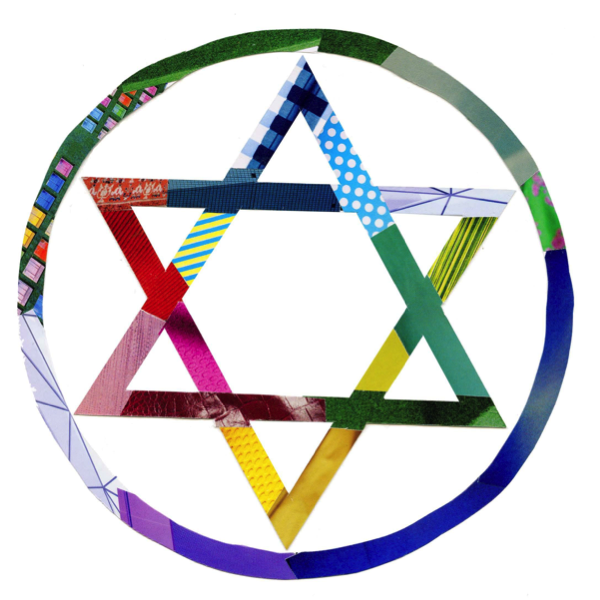by Sabrina Cadiz, Elizabeth Jimenez Fique, and Sydney Tischler
In an age when deconstructing binaries of all kinds has become next to normal, attempting to describe racial boundaries is a daunting feat. This is especially relevant when we think about the complex narratives intertwined with Jewish history. It begs quite a few questions: is Jewishness a race? a culture? a religion? a mixture of all three? And perhaps the most interesting of all–why are the most common perceptions of Jews always rooted in whiteness? According to the Atlantic article “Are Jews White?,” Jews who have historically experienced white privilege are characterized differently by two sides of United States political culture—among members of the conservative right, Jews are considered “impure—a faux-white race that has tainted America. On the extreme left, Jews are seen as part of a white-majority establishment that seeks to dominate people of color.” The erasure of Jewish people of color is a common, prevalent mistake on either side of this political spectrum—and it ultimately isolates Jews of color from the struggles and history of their people. Most of all, it whitewashes and simplifies what in reality is a deeply entangled and complex identity.
Regardless of the way they identify themselves, most American Jews have experienced white privilege since the mid- to late 1900s, but this self-definition erases the experiences of Jews who are not white. Especially as the world sees a resurgence of active anti-Semitism and the beginning of the Trump administration, white Jews are experiencing aggression based on their identity like never before in most of their lifetimes. This new wave of discrimination against Jewish people in America means that white Jews must examine their privilege more than ever before. They must seek to understand the identity that so many of their ancestors chose for them by secularizing their beliefs and actions and playing up their whiteness. Part of this examination includes recognizing that a white Jewish person’s experience is not characteristic of every Jewish person’s experience, especially when Jews of color have grown up balancing their religious identity with racial identities that don’t fit into the dominant narrative of American Jews.
In the process of writing this post and to confirm or disprove the article mentioned above, we decided to interview two students from Wellesley College to have a better understanding about their experiences as Jews who defy the dominant narrative of Judaism in America based on their race. Lewi, a first-year at Wellesley, shared her experience growing up black and Jewish in New York City. Among her predominantly white, conservative Jewish community, a frustrating aspect of her religious identity has been demonstrating that identity. “White Jews, they kind of want you to prove yourself, like ‘Can you speak Hebrew? Can you do this? Do you know what this means? Do you celebrate this?’ and I felt like it was weird, so I hid that part of myself for a long time,” she says. Despite the rich Jewish culture present in her hometown, she didn’t always feel welcome in some of the city’s Jewish communities because of her race.
Beth Horowitz experienced a similar phenomenon in her Jewish community throughout her childhood and into her experience as a young adult. A Chinese and Jewish American and a first-year Wellesley student, Horowitz describes herself as “the diversity” at her predominantly white high school in Maine. Raised by white parents, Horowitz asserts that, together with her mom, she has determined that Jews don’t belong to the “normative white world.” Horowitz, like Lewi, concealed her religious identity growing up, asserting, “I am very visibly Asian, but I am not visibly Jewish.” She also cites her last name as “coded” as both white and Jewish. She notes that people frequently inquire about her heritage.
Consistent across the two interviews is the dissatisfaction and discomfort associated with being Jewish women of color on Wellesley’s campus. There are only two Jewish cultural organizations that have any significant presence here, and both are led and comprised predominantly, if not exclusively, by white people. Lewi’s and Horowitz’s are sentiments felt by Jews of color outside of the Wellesley bubble, to be sure, but feelings of displacement are particularly significant among the small population of non-white Jews on campus; it is difficult to maintain your religious faith and affiliations in college without a community.
Both Lewi and Horowitz identify with their race equally as much as, if not more than, their religion, because of the visibility of their racial identity. As people of color who are members of a predominantly white religious and ethnic group, they have both faced prejudice within the Jewish community. Their experiences can not stand for those of the entire non-white Jewish population, but they should serve as a reminder to white Jews that, in the face of active anti-Semitism and a rapidly rising socially conservative political tide, standing up to prejudice by embracing, rather than hiding, our Jewish identity is just as important as standing in solidarity with people of all religious groups.

